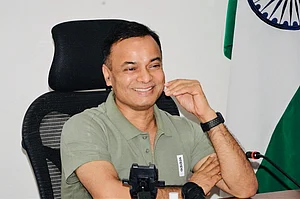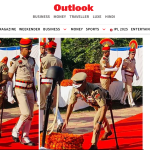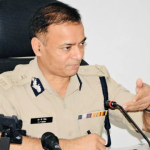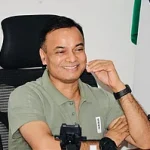
Director General of Police Haryana Advocates a Tech-Driven Crowd Strategy
India is known for its vibrant public gatherings, from massive religious pilgrimages and political rallies to cricket matches and cultural festivals. These gatherings reflect the spirit and unity of our nation. However, the y also bring a stark reality to the forefront—managing crowds safely is becoming a serious challenge. The recent tragedy at Bengaluru’s Chinnaswamy Stadium, which claimed the lives of 11 people, is a painful reminder of the urgency for change. In the wake of this incident, senior IPS officer O.P. Singh, currently the Haryana Narcotics Control Bureau head, has come forward with critical insights and a visionary approach to reimagine crowd control across India.
y also bring a stark reality to the forefront—managing crowds safely is becoming a serious challenge. The recent tragedy at Bengaluru’s Chinnaswamy Stadium, which claimed the lives of 11 people, is a painful reminder of the urgency for change. In the wake of this incident, senior IPS officer O.P. Singh, currently the Haryana Narcotics Control Bureau head, has come forward with critical insights and a visionary approach to reimagine crowd control across India.
With over three decades in public service and deep expertise in public order and crowd behavior, Singh—also the former Director General of Police Haryana advocates for a radical shift in how India plans for and manages large gatherings. He emphasizes that crowd management can no longer remain an afterthought or a temporary policing measure. Instead, it needs to be institutionalized into governance, planning, and policy-making through a national framework.
The Shift from Reaction to Proactive Planning
Singh believes that the core issue lies in the way we currently perceive crowd management—largely as a reactive responsibility. Traditional methods like setting up barricades or deploying baton units may have served well in the past, but they’re losing effectiveness in today’s dynamic and digital world. Crowds now form rapidly, often spurred by social media, and gather in places not originally designed for large-scale assemblies. This fluid and unpredictable nature of modern crowds demands a proactive and systemic approach rather than piecemeal responses.
Singh calls for a fundamental shift from “event policing” to a “systems thinking” approach. Rather than scrambling at the last minute to control a crowd, agencies must anticipate, prepare, and work in tandem long before the event begins. This requires integrating crowd management into broader urban planning, public safety, and disaster management strategies.
Why Traditional Methods Are Failing
In OP Singh’s view, the evolution of crowd behavior has outpaced the evolution of crowd control techniques. Today’s crowds are more decentralized and spontaneous. They aren’t always led by clear hierarchies or planned routes, which means that old-school tactics like cordoning off areas or deploying forces at fixed points are often insufficient.
Police personnel on the ground might have the experience, but they often lack the technological support or infrastructure to respond effectively. Without predictive systems, they are left to rely on visual judgment and instinct, which, in high-pressure situations, may not be enough to prevent chaos.
Envisioning a National Framework for Crowd Management
Singh, as the Haryana Narcotics Control Bureau head, proposes a comprehensive National Framework for Crowd Management that would bring consistency, professionalism, and preparedness to how events are handled across states and districts. This framework would be built around several key principles:
-
Flexible, Tiered Planning Protocols: Events should be categorized based on expected crowd size, risk level, location, and available infrastructure. Each category would have a corresponding planning checklist.
-
Formal Risk Assessments: Authorities must conduct assessments ahead of any major gathering, identifying potential hazards, pressure points, and emergency response routes.
-
Pre-Defined Deployment Plans: Rather than improvising on the spot, teams should operate using standard playbooks with clear roles and responsibilities.
-
Integrated Safety with Disaster Management: Crowd control should be treated as part of India’s disaster response ecosystem, ensuring that plans align with emergency medical services and civil defence.
Joint Operation Centres (JOCs): Coordination is Key
One of Singh’s most impactful recommendations is the creation of Joint Operation Centres at the district level. These centers would serve as coordination hubs where police, fire services, healthcare, municipal bodies, and transportation departments come together under a unified command. This level of collaboration can significantly improve situational awareness and ensure that resources are deployed efficiently and in real-time.
In many crowd-related disasters, the lack of communication between agencies is a common theme. JOCs would eliminate this gap, allowing for seamless information sharing and a faster, more cohesive response to emerging threats.
Leveraging Technology for Smarter Crowd Control
While CCTV and drone surveillance are already in use in some cities, Singh emphasizes that we need to go several steps further. Integrating surveillance with AI-based crowd modeling and density tracking could provide real-time heatmaps, identifying where a crowd is thickening and predicting potential danger zones. These AI systems can send automatic alerts to authorities, enabling preventive action before a situation escalates.
The Ministry of Home Affairs, Singh suggests, could fund pilot projects in collaboration with Indian research institutes and tech startups to develop tailor-made crowd monitoring solutions suited for the unique challenges of Indian cities.
Infrastructure That Moves With the Crowd
Technology alone won’t solve the problem. Singh underscores the role of crowd-conscious infrastructure in preventing stampedes and ensuring smooth movement. Many public spaces in India are poorly designed when it comes to handling large foot traffic—there’s inadequate signage, insufficient exits, and little consideration for flow design.
Cities must upgrade public spaces with:
-
Clear and multilingual signage
-
Multiple exits and evacuation routes
-
Elevated walkways for better flow
-
Mobile first-aid and command posts
-
Temporary modular infrastructure during high-density events
The key is not necessarily heavy capital investment but smarter, thoughtful planning based on crowd science and urban safety principles.
Beyond Policy—A Cultural Shift in Governance
Perhaps the most significant takeaway from Singh’s insights is the call for a cultural shift in how authorities and the public perceive crowd management. Safety shouldn’t be seen as the police’s job alone. It’s a shared responsibility that involves city planners, civil society, media, and event organizers. Encouraging accountability at every level—before, during, and after a public gathering—is crucial.
Public awareness campaigns, regular drills, and inclusion of crowd safety in event licensing criteria can also play an important role. Singh’s vision is not just about enforcing safety but about embedding it into the DNA of governance.
As the former Director General of Police Haryana, Singh brings not only administrative authority but also strategic foresight to this pressing issue. His call for reform is grounded in lived field experience and a proven track record in leadership.
Planning for Crowds Must Become Routine
As India continues to grow and its urban gatherings become even more frequent and massive, the need for a robust crowd management strategy becomes imperative. O.P. Singh’s proposed national framework offers a timely, thoughtful, and much-needed blueprint for the future.
By shifting from reactive measures to proactive planning, embracing technology, enhancing inter-agency coordination, and building smarter infrastructure, we can ensure that our celebrations remain joyous—and safe. In Singh’s words, “Planning for huge crowds should become routine.” Only then can we truly honor the spirit of public gatherings while safeguarding every life that participates in them.



